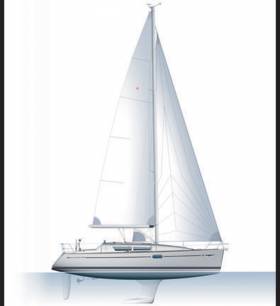Displaying items by tag: Sun Odyssey36i
Sun Odyssey 36i For Sale Is On Target For Fast Trouble–Free Sailing
Boat owning these days is an increasing challenge, with unavoidable costs and spiralling maintenance charges always needing to be balanced against the hoped-for return in trouble-free sailing pleasure writes W M Nixon.
It’s very easy to be enchanted by the thought of bringing life back to some once-cherished boat which has somehow fallen on hard times. But in times of economic rigor, a feeling of sympathy is not a sound basis on which to be making a very significant purchasing decision.
In other words, the uncertain Autumn of 2016 is not a good time to be taking on someone else’s problems. On the contrary, if you’re on the lookout for a sensible used boat, take account of the fact that a minimum number of owners with the boat in question, and the sense of her having been well-cared for, will provide every expectation of a relatively trouble-free and enjoyable ownership period for yourself.
The above general rules apply in any boat-buying situation. Yet they might have been written after studying the data available on this Sun Odyssey 36i for sale through Crosshaven Boatyard and advertised on Afloat Boats for Sale. Built 2008, she was commissioned in 2009, but has had only one owner from new. And as broker Hugh Mockler’s video eloquently tells us, even after seven years she’s still quite simply as good as new.
She’s an interesting Marc Lombard design of top-end construction – the “i” at the end of her name is to indicate she was injection-moulded under scientific and carefully-controlled conditions. A very manageable size – big enough to be comfortable without being bigger than most folk would require – her asking price of €82,950 reflects the extensive range of equipment and the fact that she’s ready to go. With good weather forecast for this final Bank Holiday weekend before Christmas, you could be sailing her with confidence this Saturday. As they say in the trade, she’s very well presented – details here























